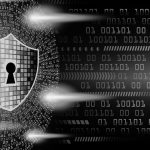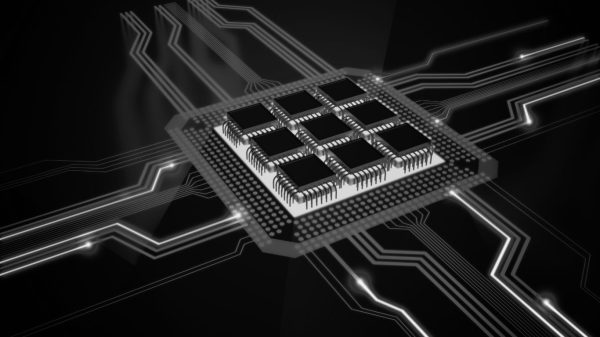In today’s hyperconnected world, the distinction between network security and cybersecurity has become increasingly blurred. The rise of cloud computing, remote work, and sophisticated cyber threats has transformed how we approach digital security. This comprehensive guide explores the fundamental aspects of both network security and cybersecurity, offering practical insights for businesses and individuals alike.
Understanding the Foundation: Network Security and Cybersecurity
Network Security: The First Line of Defense
Network security focuses specifically on protecting the integrity of computer networks and network-accessible resources. Key components include:
- Network Access Control (NAC): Ensures that only authorized users and devices can access the network, preventing unauthorized entry.
- Firewall Implementation and Management: Acts as a barrier between trusted and untrusted networks, monitoring and controlling incoming and outgoing network traffic based on predetermined security rules.
- Virtual Private Networks (VPNs): Establishes secure, encrypted connections over less secure networks, such as the internet, to protect data transmission.
- Network Segmentation: Divides a network into multiple segments or subnets, each acting as a separate network, to enhance security and improve performance.
- Intrusion Detection and Prevention Systems (IDS/IPS): Monitors network traffic for suspicious activity and takes action to prevent potential threats.
Cybersecurity: The Broader Picture
Cybersecurity encompasses the entire digital security landscape, including:
- Application Security: Protects applications from threats throughout their development and deployment stages.
- Cloud Security: Safeguards data, applications, and services hosted in the cloud through policies, technologies, and controls.
- Data Protection: Ensures the privacy and integrity of data through encryption, access controls, and other protective measures.
- Identity and Access Management (IAM): Manages user identities and their access to resources within an organization.
- Incident Response: Prepares for and responds to security breaches or cyber attacks to minimize impact.
- Social Engineering Prevention: Implements measures to protect against manipulation tactics used to deceive individuals into divulging confidential information.
Essential Security Measures for Modern Organizations

1. Zero Trust Architecture
The traditional “trust but verify” approach has given way to “never trust, always verify.” Zero Trust architecture assumes no user or system is trustworthy by default, requiring continuous validation regardless of location or network position. This model enhances security by minimizing the risk of unauthorized access.
2. Advanced Threat Detection
Modern security systems employ:
- Artificial Intelligence and Machine Learning for Threat Detection: Utilizes AI and ML to identify patterns and anomalies indicative of potential threats.
- Behavioral Analytics: Analyzes user behavior to detect deviations that may signify a security breach.
- Real-Time Monitoring and Alerting: Provides immediate detection and notification of suspicious activities.
- Automated Response Systems: Enables swift action to mitigate threats without human intervention.
3. Data Protection Strategies
Protecting sensitive information requires:
- End-to-End Encryption: Ensures data is encrypted throughout its entire journey, from source to destination.
- Data Classification: Categorizes data based on sensitivity to apply appropriate security measures.
- Access Controls: Restricts data access to authorized individuals only.
- Regular Backup and Recovery Testing: Maintains data integrity by ensuring backups are performed and recovery processes are tested regularly.
- Data Loss Prevention (DLP) Solutions: Monitors and protects data from unauthorized access or leaks.
Emerging Threats and Countermeasures
Current Threat Landscape
Organizations face increasingly sophisticated attacks:
- Ransomware-as-a-Service (RaaS): Cybercriminals offer ransomware tools and services to others, lowering the barrier to entry for launching attacks.
- Supply Chain Attacks: Targets less-secure elements within a supply chain to compromise larger organizations.
- IoT Vulnerabilities: Exploits weaknesses in Internet of Things devices, which often lack robust security measures.
- Advanced Persistent Threats (APTs): Prolonged and targeted cyber attacks aimed at stealing data or surveilling organizations over time.
- Quantum Computing Threats: Future quantum computers may possess the capability to break current encryption methods, posing significant security risks.
Defensive Strategies
Effective security requires a multi-layered approach:
Employee Training and Awareness
- Regular Security Awareness Training: Educates employees on recognizing and responding to potential threats.
- Phishing Simulation Exercises: Tests employee responses to simulated phishing attacks to improve vigilance.
- Security Policy Education: Ensures employees understand and adhere to organizational security policies.
- Incident Response Drills: Prepares staff to act swiftly and effectively during security incidents.
Technical Controls
- Next-Generation Firewalls: Provides advanced filtering capabilities to detect and block sophisticated threats.
- Endpoint Detection and Response (EDR): Monitors and responds to threats on endpoint devices.
- Security Information and Event Management (SIEM): Aggregates and analyzes security data to detect anomalies.
- Cloud Access Security Brokers (CASB): Acts as intermediaries between users and cloud service providers to enforce security policies.
Defense in Depth
Implementing a multi-layered security approach ensures that if one defense layer is compromised, others remain intact to protect critical assets. This strategy includes:
- Physical Security Controls: Securing physical access to hardware and network components to prevent unauthorized tampering.
- Technical Controls: Utilizing firewalls, intrusion detection systems, and antivirus software to monitor and protect digital environments.
- Administrative Controls: Establishing policies and procedures that govern security practices within the organization.
Threat Intelligence Integration
Staying informed about emerging threats enables organizations to proactively adjust their defenses. This involves:
- Subscribing to Threat Intelligence Feeds: Receiving real-time updates on new vulnerabilities and attack vectors.
- Participating in Information Sharing Communities: Collaborating with industry peers to share insights and strategies.
Secure Software Development Practices
Incorporating security into the software development lifecycle helps in identifying and mitigating vulnerabilities early. Key practices include:
- Code Reviews: Regularly examining code for security flaws.
- Static and Dynamic Analysis: Employing tools to detect vulnerabilities during development and testing phases.
- Secure Coding Standards: Adhering to established guidelines that promote writing secure code.
Endpoint Security
Protecting end-user devices is crucial, as they often serve as entry points for attackers. Measures include:
- Endpoint Detection and Response (EDR): Monitoring endpoints for suspicious activities and responding to threats in real-time.
- Application Whitelisting: Restricting devices to run only approved applications to prevent the execution of malicious software.
Regular Security Audits and Assessments
Conducting periodic evaluations of security controls ensures their effectiveness and identifies areas for improvement. This process involves:
- Vulnerability Assessments: Identifying and prioritizing vulnerabilities within the system.
- Penetration Testing: Simulating attacks to test the resilience of defenses.
- Compliance Audits: Ensuring adherence to relevant regulations and standards.
Incident Response and Recovery Planning
Preparing for potential security incidents minimizes their impact and facilitates swift recovery. Essential components include:
- Incident Response Plan: A documented strategy outlining steps to take during a security breach.
- Disaster Recovery Plan: Procedures to restore systems and data after a significant disruption.
- Business Continuity Plan: Strategies to maintain essential functions during and after a crisis.
Security Awareness and Training
Educating employees about cybersecurity best practices fosters a security-conscious culture. Training should cover:
- Recognizing Phishing Attempts: Identifying and avoiding deceptive communications.
- Safe Internet Practices: Understanding the risks associated with online activities.
- Data Protection Policies: Proper handling and storage of sensitive information.
Advanced Defensive Techniques
Employing sophisticated methods can further enhance security:
- Deception Technologies: Implementing honeypots and decoys to mislead attackers and gather intelligence on their tactics.
- Moving Target Defense: Continuously changing system configurations to disrupt potential attack plans.
- Automated Defense Mechanisms: Utilizing artificial intelligence and machine learning to detect and respond to threats in real-time.
By integrating these defensive strategies, organizations can establish a robust security posture that not only protects against current threats but also adapts to the ever-changing cybersecurity landscape.










